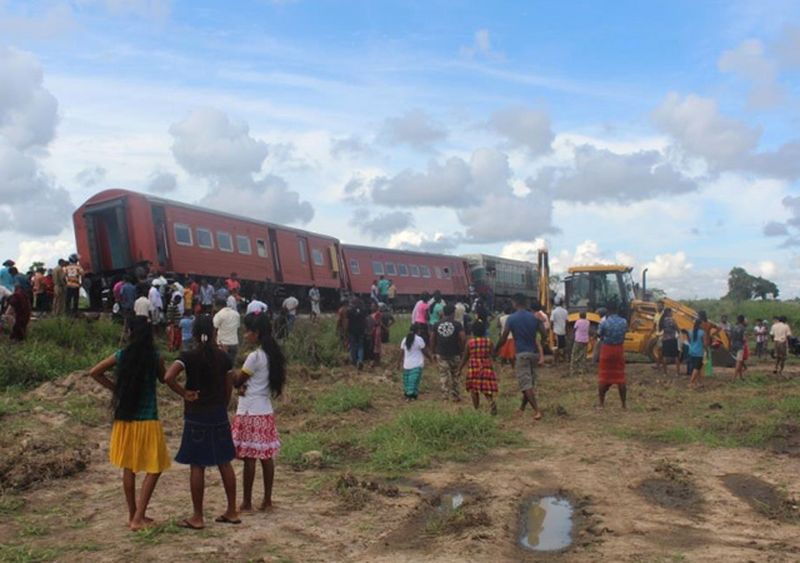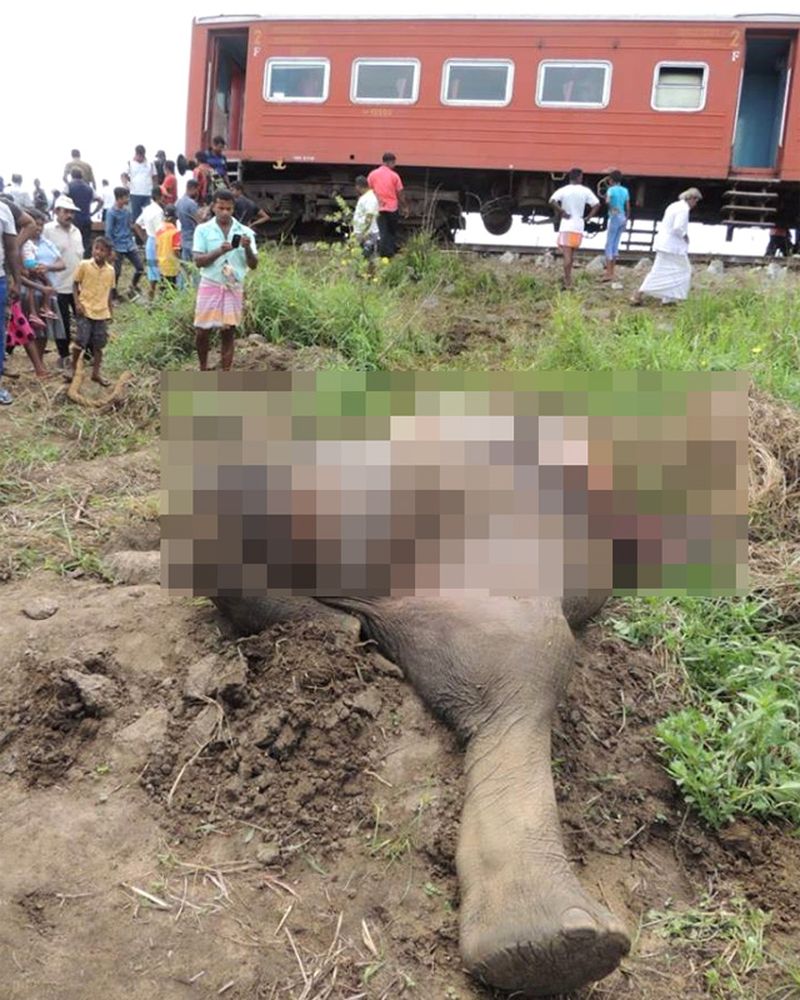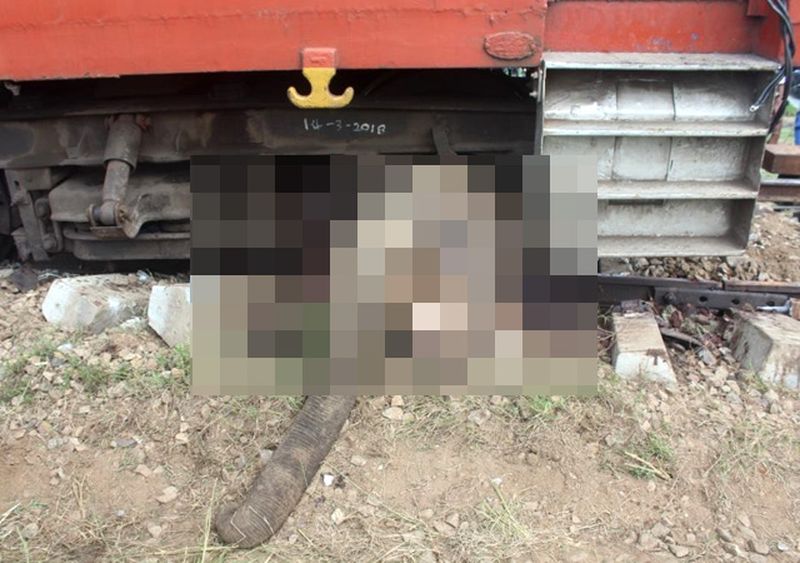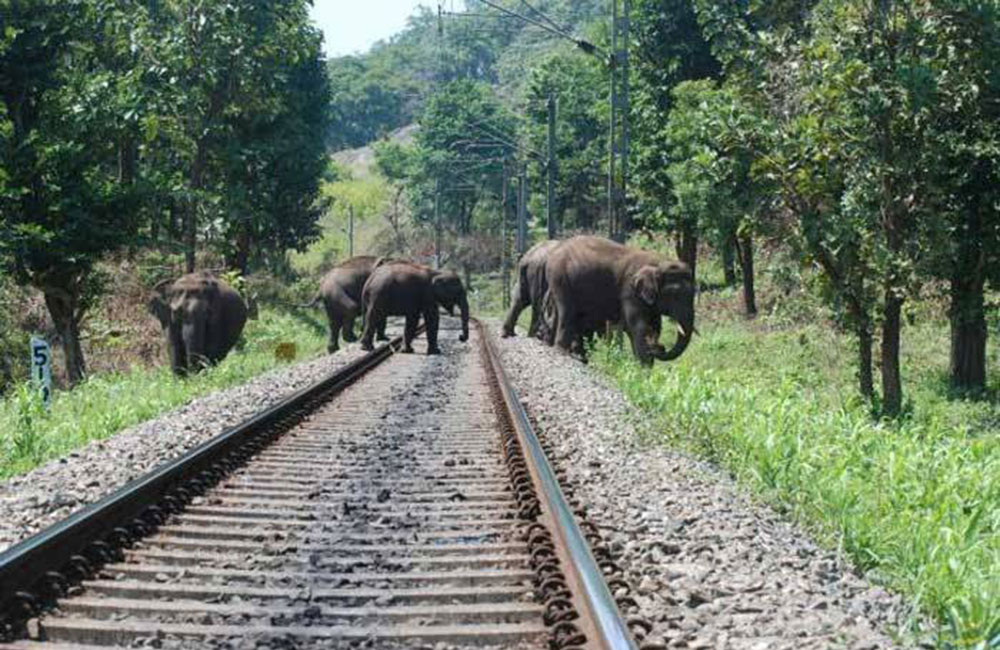Blessed with wondrous natural beauty and exotic wildlife, Sri Lanka has quickly become one of the world's most popular tourist destinations.
But few tourists to the Indian Ocean island know that the massive development launched across the country to cater to their needs has contributed to a tragic outcome for Sri Lanka's endangered elephant population.
A growing number of elephants in Sri Lanka are being slaughtered by fast-moving trains, as the animal's natural habitat has rapidly shrunk over the past decade.

A train is derailed after striking an number of elephants. (Supplied)
Terrible and graphic images of pregnant female elephants and young calves killed by passenger trains have repeatedly emerged from Sri Lanka last year.
According to Department of Wildlife figures, 15 elephants were killed by trains in 2018, almost more than double the previous year. Total elephant deaths in 2018 numbered 273, up from 256 in 2017.
Leading wildlife experts are concerned the Sri Lankan government is not doing enough to protect elephants, which are a huge drawcard for millions of tourists who visit the country.
Accusatory fingers are also being pointed at ill-disciplined train drivers failing to obey speed limits during the night, when elephants might be seeking warmth from the tracks.
"The incidents have grown in number in the last several years, it has become much more frequent," elephant welfare campaigner Srilal Miththapala told nine.com.au.
"Over the last decade there has been a lot of development, a lot of clearing of forest and a lot of villages being settled in areas which used to be elephant territory.
"This has disrupted the movements of elephants, especially the males who are much more mobile … now they must cross villages and tracks, and altercations take place.
Mr Miththapala, who also sits as vice president of the Tourist Hotels Association of Sri Lanka, fears mostly roaming males are being killed by trains, potentially affecting the male-female ratio of Sri Lanka's elephant population.
Sri Lankans look at an elephant killed by a train. (Supplied)
Trains travelling from Colombo and the west across central Sri Lanka towards the eastern coastal cities of Trincomolee and Batticaloa have been involved in a high number of elephant collisions.
Mr Miththapala has proposed the government builds an early warning signal track system of flashing lights and sirens in areas where elephants are known to move.
Experts believe that in recent times elephants have become too accustomed to humans, as wild and manmade environments become increasingly fused together.
"The elephants seem to be acclimatised to the train noise," Mr Miththapala said. "They try to scatter, but when there are babies and mothers they sometimes get hit."
In one of the worst recent incidents, four elephants including an 80-day-old unborn elephant died in October after they were run over by a night mail train.
Four elephants were mown down and killed a month earlier.
Despite the tourism boom in Sri Lanka since the country's 26-year civil war ended in 2009, Mr Miththapala said the government has not done enough to ensure elephants are protected for future generations.
"The appetite and will [from politicians] is not there to remedy this problem," he said.

A Sri Lankan elephant is dead and trapped under a train. (Supplied)
He said the Department of Wildlife and Department of Transport "don't see eye to eye" on trains killing elephants.
"Both their mandate are different. The Department of Wildlife is there to protect animals, while [the Department of Transport] is there to ensure efficient travel and services."
Researchers estimate there are probably around 6500-7000 wild elephants in Sri Lanka. It is a "healthy" number, Mr Miththapala said, but it risks masking several serious issues that could have dire consequences.
"The current picture is rather gloomy. The numbers [of elephants] is always up for debate," Mr Miththapala said.
"Given the shrinking habitat of the elephants ... we feel the current capacity [of 7000] is too high, that the country can't sustain this level of development and that number of elephants."
Studies are also currently underway to better understand the male-female ratio in the elephant population, with fears the number of males is dangerously low.
The World Wide Fund for Nature (WWF) lists the Sri Lankan elephant as an endangered species.
The Sri Lankan elephant population has fallen almost 65 percent since the turn of the 19th century, according to WWF.

Leave your comments
Login to post a comment
Post comment as a guest